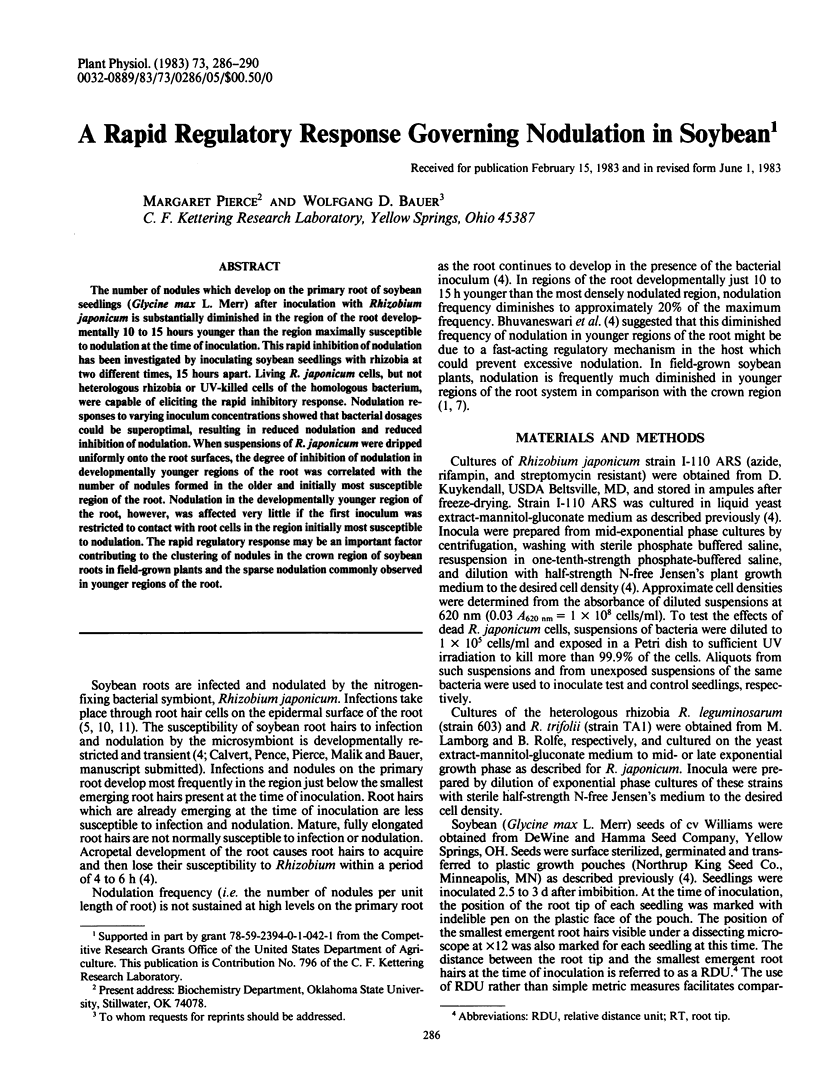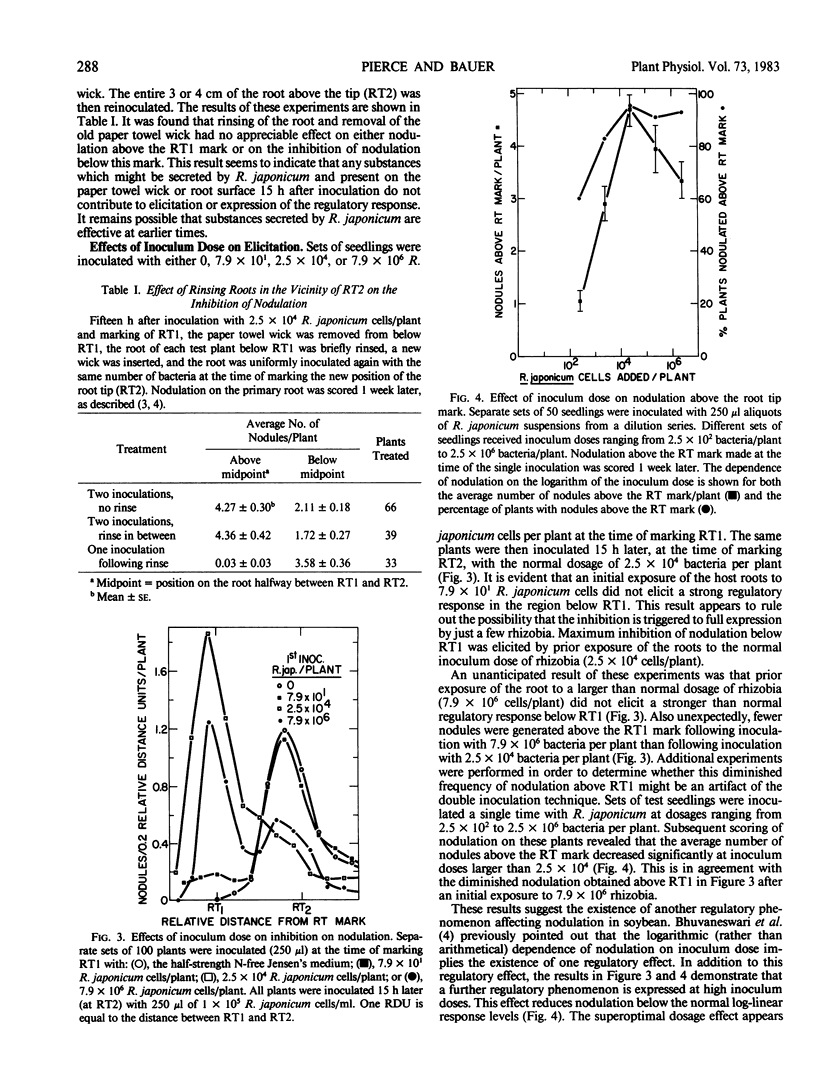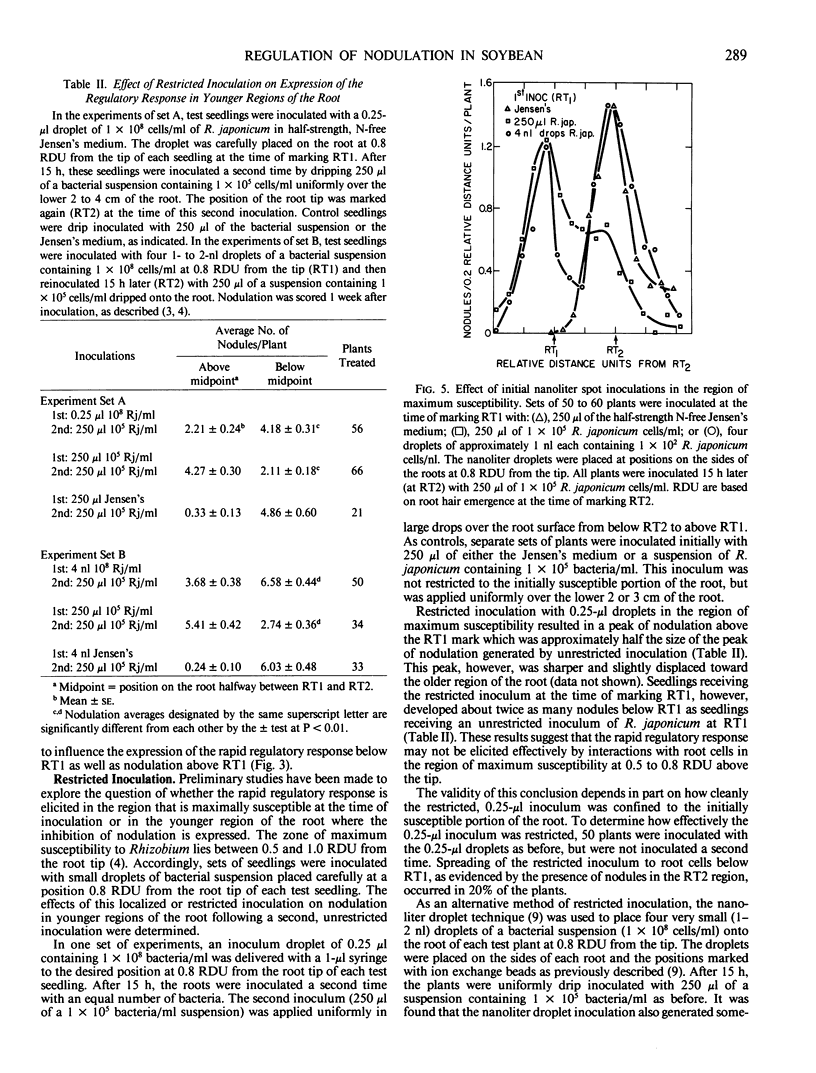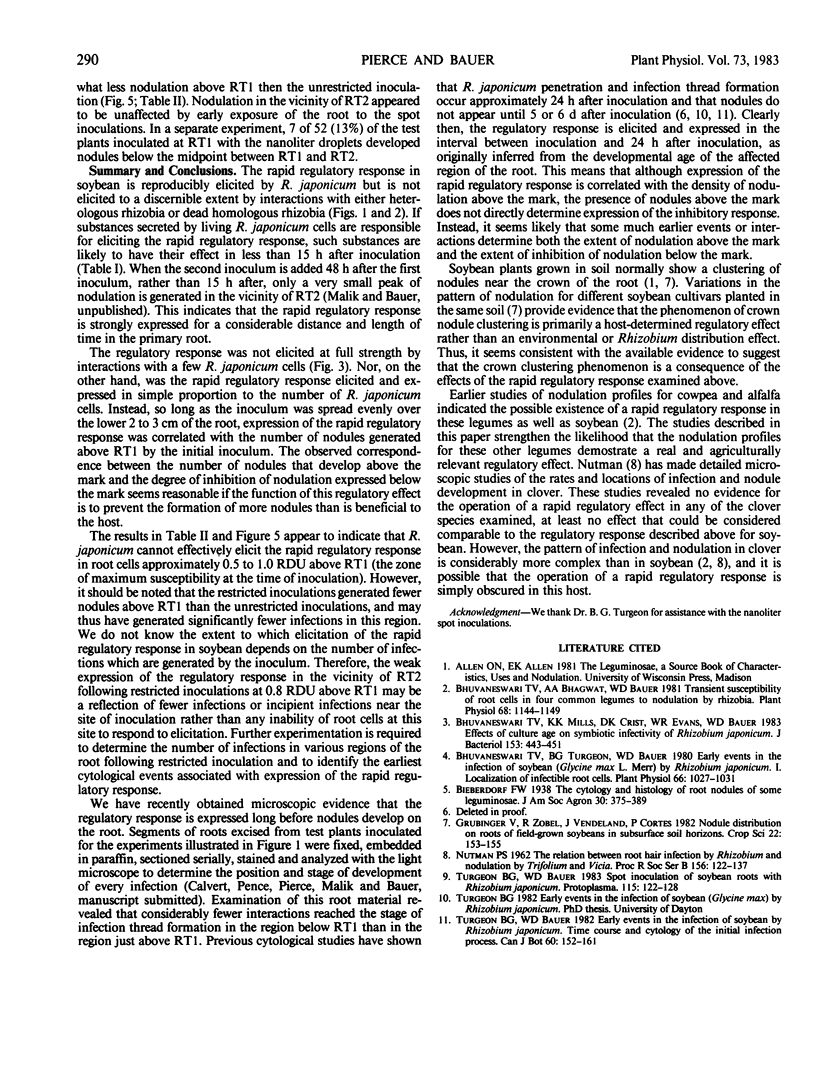Abstract
The number of nodules which develop on the primary root of soybean seedlings (Glycine max L. Merr) after inoculation with Rhizobium japonicum is substantially diminished in the region of the root developmentally 10 to 15 hours younger than the region maximally susceptible to nodulation at the time of inoculation. This rapid inhibition of nodulation has been investigated by inoculating soybean seedlings with rhizobia at two different times, 15 hours apart. Living R. japonicum cells, but not heterologous rhizobia or UV-killed cells of the homologous bacterium, were capable of eliciting the rapid inhibitory response. Nodulation responses to varying inoculum concentrations showed that bacterial dosages could be superoptimal, resulting in reduced nodulation and reduced inhibition of nodulation. When suspensions of R. japonicum were dripped uniformly onto the root surfaces, the degree of inhibition of nodulation in developmentally younger regions of the root was correlated with the number of nodules formed in the older and initially most susceptible region of the root. Nodulation in the developmentally younger region of the root, however, was affected very little if the first inoculum was restricted to contact with root cells in the region initially most susceptible to nodulation. The rapid regulatory response may be an important factor contributing to the clustering of nodules in the crown region of soybean roots in field-grown plants and the sparse nodulation commonly observed in younger regions of the root.
Full text
PDF




Selected References
These references are in PubMed. This may not be the complete list of references from this article.
- Bhuvaneswari T. V., Bhagwat A. A., Bauer W. D. Transient susceptibility of root cells in four common legumes to nodulation by rhizobia. Plant Physiol. 1981 Nov;68(5):1144–1149. doi: 10.1104/pp.68.5.1144. [DOI] [PMC free article] [PubMed] [Google Scholar]
- Bhuvaneswari T. V., Mills K. K., Crist D. K., Evans W. R., Bauer W. D. Effects of culture age on symbiotic infectivity of Rhizobium japonicum. J Bacteriol. 1983 Jan;153(1):443–451. doi: 10.1128/jb.153.1.443-451.1983. [DOI] [PMC free article] [PubMed] [Google Scholar]
- Bhuvaneswari T. V., Turgeon B. G., Bauer W. D. Early Events in the Infection of Soybean (Glycine max L. Merr) by Rhizobium japonicum: I. LOCALIZATION OF INFECTIBLE ROOT CELLS. Plant Physiol. 1980 Dec;66(6):1027–1031. doi: 10.1104/pp.66.6.1027. [DOI] [PMC free article] [PubMed] [Google Scholar]


